From the West Hartford Archives: Cascio Nursery, Albany Avenue

Audio By Carbonatix
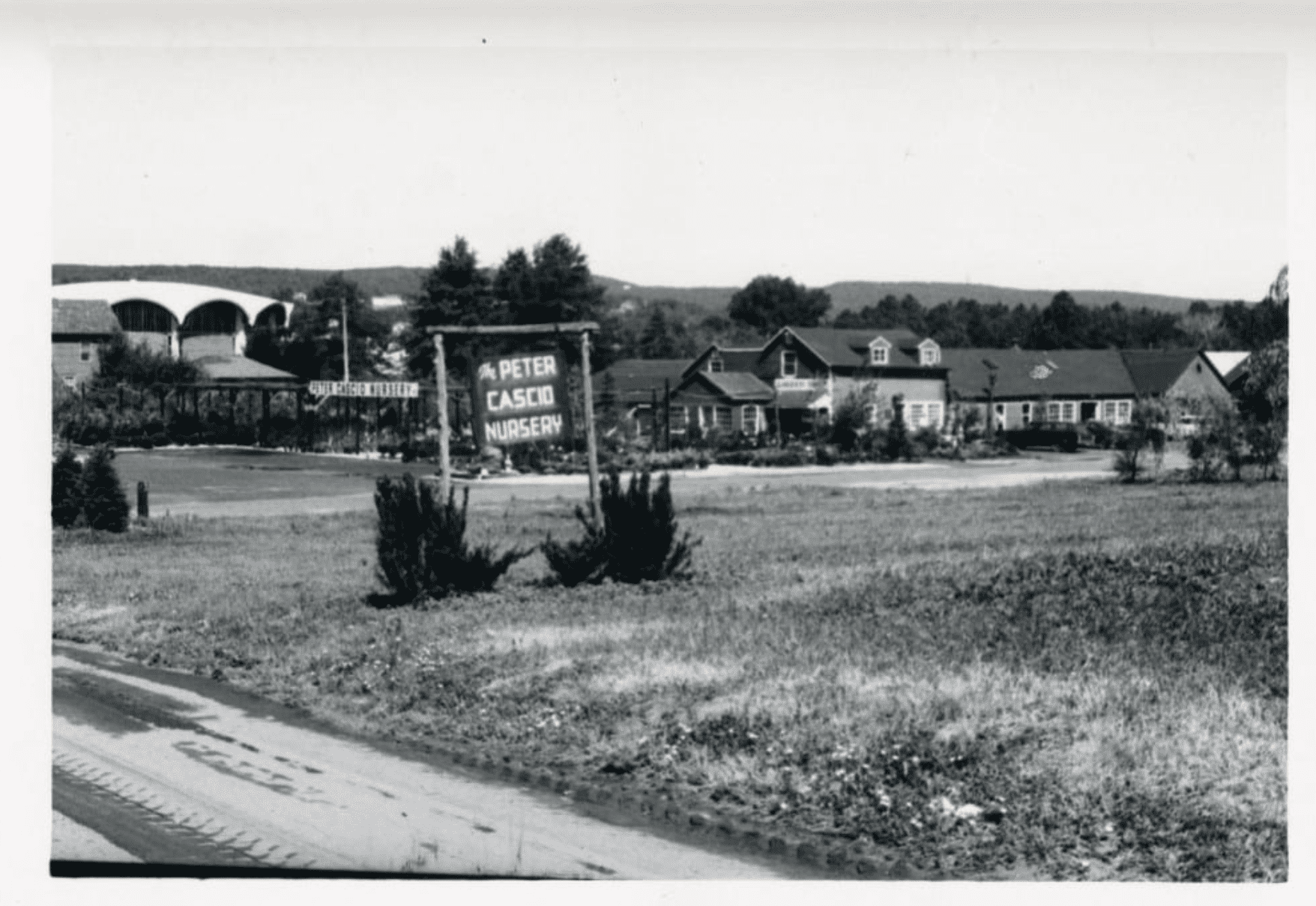
Cascio Nursery, 2600 Albany Avenue, in 1966. Courtesy of Noah Webster House and West Hartford Historical Society
Historian Jeff Murray takes a look into West Hartford’s past to uncover some surprising information, stir up some memories, or reflect on how much life has changed – or hasn’t changed at all. Enjoy this week’s ‘From West Hartford’s Archives’ …
By Jeff Murray
This is a photo of Peter Cascio Nursery at 2600 Albany Avenue, west of Bishop’s Corner, in 1966. It is located at the current site of Moscarillo’s Garden Shoppe.
This is my attempt to lay out the history of the north side of Albany Avenue from Bishop’s Corner to Mountain Road. Until the 1950s, this side of the street and beyond to the north was an open patchwork of land owners and an even more open landscape. According to William Hall’s history of the town, Albany Avenue was one of the three oldest streets at the beginning of its settlement, although it originally ran along what is now Flagg Road.
In 1798, the Talcott Mountain Turnpike Company established a turnpike over Avon Mountain to New Hartford. The road was adjusted from Flagg Road to the current Albany Avenue later. The opening of the road from Hartford to Albany along this line allowed families to settle along the route.
At the northwest corner of North Main Street at Bishop’s Corner, Aaron Goodman conducted a tavern and post office for the north end of West Hartford in the 1800s. Goodman was appointed postmaster in 1820 until 1832 when Elihu Olmsted succeeded him at the Center.
A little further west, Levi Sedgwick opened a blacksmith shop. William Hall recalled that as a boy, in the 1850s, he would see him sometimes in his shop and that he was the mythical village blacksmith. One might say that in an agricultural community by the time of West Hartford’s independence, blacksmithing would have been magic to the kids. Heading down the road on the north side of Albany Ave would bring you to the farm of Solomon R. Fuller and his son, William H. Fuller, who would inherit it into the 1900s, and then the farm of Ebenezer Steele up the road.
Finally, you would approach the houses of Edward Kelsey, which still stand at 2668 and 2678 Albany Avenue, just east of Huntington Drive. Edward Kelsey was born in Bloomfield in the 1810s and came to West Hartford when he was young. He married Harriet Bull in 1842 and they had a son, Frederick, and adopted his niece, Fanny, who lived with them. He was an original member of St. James’s Church in town and built the first piece of paved macadam road along Albany Avenue. Roads were an immense source of pride among the townspeople, not just for the safer and more secure travel but also for the reputation they had when people outside West Hartford traveled along them.
Finally, the last stop along the avenue at Mountain Road was the old Whiting homestead at the northeast corner. It was the site of the birth of many Whitings, including Alfred Whiting, who grew up and laid out Whiting Lane in the east side of town. At the time of this tour along Albany Avenue, it would have been in the possession of Alfred’s brother Emerson, who was president of the brand new Highland Creamery Company across the street and one of the town’s selectmen.
When Emerson died in 1895, the property at the corner passed to his wife Mary Chapman and stepdaughter Nellie TenEyck, her daughter from a previous marriage. Mary re-married to Henry J. Reed and had another daughter. She lived there until after WWI when she sold the property, which extended east to Huntington Drive and then north to Longlane Road, to Heman Hamlin.
Hamlin was a carpenter and the grandson of George Wells, who had witnessed Revolutionary War soldiers drilling on Mountain Road. He was born in the old Wells house nearby in the 1840s and retained deep ties to the neighborhood his entire life, living most of it on Flagg Road. Unmarried, he died in 1940. When the land was developed and houses were built starting in the early 1950s by the Green Acres Inc., three streets were laid out: Huntington Drive, Little Lane, and Hamlin Drive.
The Hamlin estate was in the rear of the Kelsey houses at 2668 and 2678 Albany Avenue to the north. After Edward Kelsey’s death in 1897, his widow and his niece Fanny’s family (she married Lewis Teeter, who conducted the farm) lived there. Upon her own death in 1909, the Teeters inherited the farm until they sold it to Charles S. Root and his wife Gertrude Warner in 1913 and moved to the Center (specifically a street known as Nichols Court, which no longer exists but is now the entrance to the parking lot at Whole Foods off Raymond Road).
The Roots were longtime owners of the Kelsey property and they built at least one other house on the land. They sold the 20-acre property to Israel Grody, president of Grody Chevrolet, in 1937 and moved to Canton. Grody lived at 2642 Albany Avenue until his death in 1982. In 1959, the subdivision West Ridge Estates was laid out at the east and northeastern edges of the Kelsey property, encompassing West Ridge Drive, the southern connection of Hartwell Road, and Cascade Road.

Albany Avenue land ownership in 1923 (west end), Sanborn Map Company
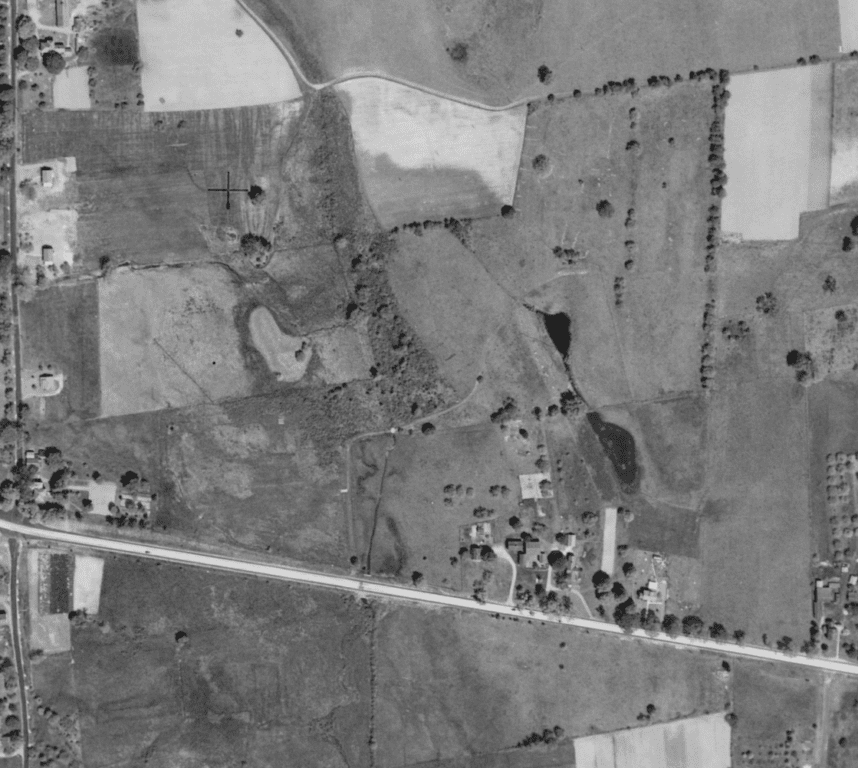
Aerial map of the west end of Albany Avenue in 1934, the property lines can be faintly seen. Courtesy photo
Located at 2636 Albany Avenue was the house and farm of Ebenezer Steele in the mid-1800s, later the farm of John Edgerton. This house is listed as being built around 1867. Edgerton lived there from at least the 1880s until his death in 1906. His son Joseph B. Edgerton inherited the farm and lived there with his family and his mother Lavilla Burr into the Great Depression. Further to the east was the farm of Solomon Fuller and his son William, who inherited the property and operated the farm there. Fuller sold it to Truman D. Cowles in 1921 and moved to New Jersey, where he died the following year.
The Edgerton and Fuller land together passed through various hands until it was sold to Peter J. Cascio and his wife, Helen. The Cascios had lived at the east side of town near Prospect Avenue and Park Road in the early 1930s. Born in Italy, Cascio was a landscape gardener who had conducted a business known as the Fernhill Nursery across from Fern Park. In the fall of 1936, the Cascios removed to 2600 Albany Ave, expanding the business. He converted the Edgerton house on the western edge of the property into a two-family house in the 1940s. Helen managed the nursery from 1942 to 1945 while Peter was serving during WWII.
In 1953, the town approved the construction of Beth El Temple at 2626 Albany Avenue, behind the old Edgerton house and on the land owned by the Cascios, by a group from Hartford’s Emanuel Synagogue expanding into West Hartford. The group was led by Isadore Savin, Harry Kleinman, and Arthur Silverman, with many more members. The complex was built onto over the years and the modern sanctuary standing today on the site was erected in 1963. The Cascios were granted the right of way to conduct their nursery business.
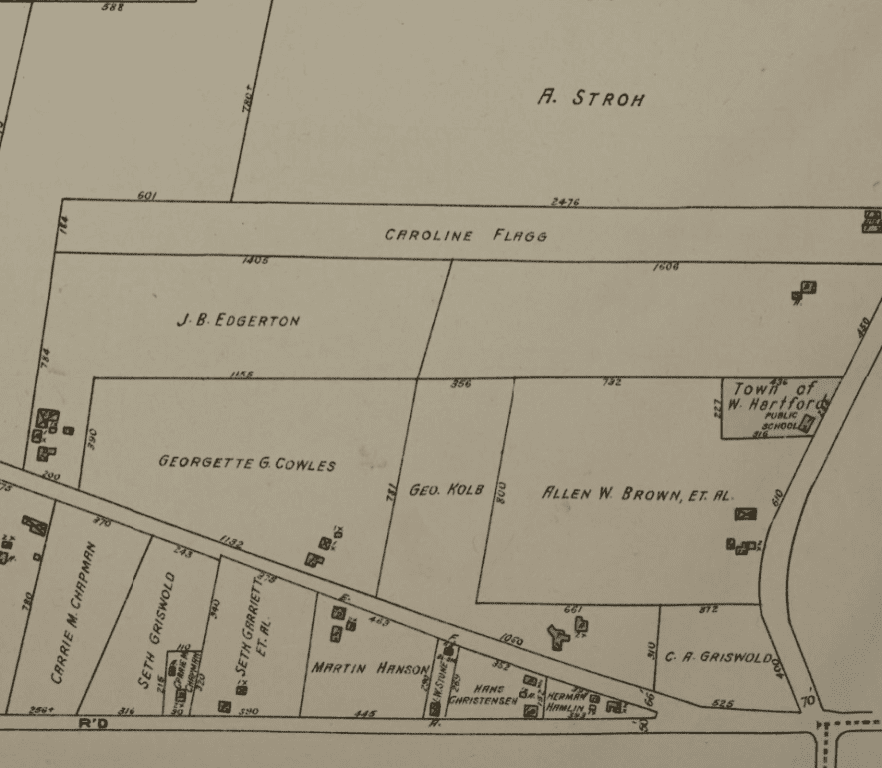
Albany Avenue land ownership in 1923 (east end to Bishop’s Corner), Sanborn Map Company
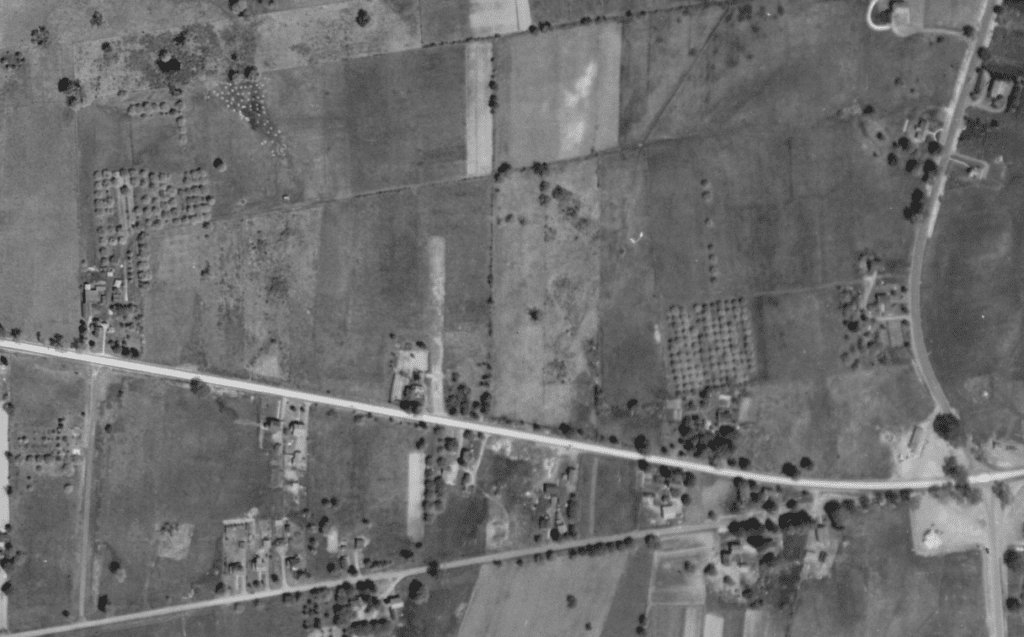
Aerial map of the east end of Albany Avenue in 1934, the property lines can be faintly seen. Courtesy photo
With the sale and construction, the Cascio nursery retained the business at the east end of the property for nearly four more decades. New streets behind the nursery laid out in the 1950s – Magnolia Hill, Dogwood Lane, and connections to adjacent subdivisions – were on the former Edgerton and Fuller farms. In April 1991, the Cascio Nursery property was sold to Allen Domack, who opened the Moscarillo Garden Shoppe, which still operates there today.
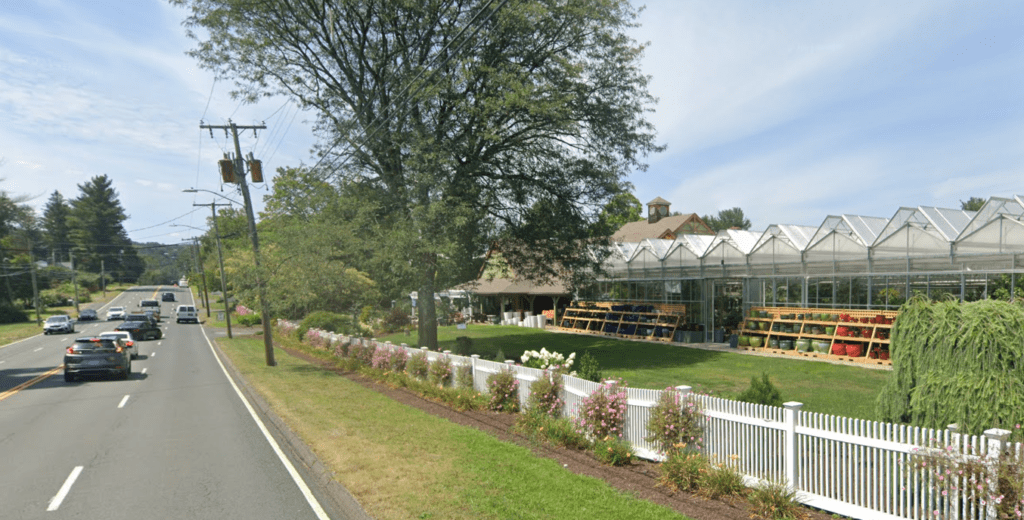
Moscarillo’s Garden Shoppe. Google Street view
Finishing off the tour of this end of Albany Avenue, the condos at Woodbury Lane, built in the 1980s, were on land that originally extended to the older house to the east at 2558 Albany Avenue. This was the site of Levi Sedgwick’s blacksmith shop during West Hartford’s independence era in the 1850s. After the Sedgwicks sold the property, it came into the hands of Fanny Bushey in 1901. Her son Daniel was one of the first policemen in town. During the WWI era, George O. Kolb, owner of a Hartford bakery, bought the property. He altered the house in 1917 and named it Rosemary Farm. It was the site of many dog shows in the 1920s. (It’s a mighty shame that the dog photos from the newspaper can’t be reproduced here because they are glorious.)
After the Kolbs, it became the land of Walter E. Mallory, agency secretary of Travelers Insurance, in the 1930s and remained in the family until the 1980s. The streets laid out to the north behind this though (Farmstead Lane, Overhill Road, and Brightview Drive) were all on the land of Allen W. Brown, whose land fronted on North Main Street. The block of this subdivision can be seen in the 1923 map when it was all owned by the Browns.
That leaves us with the history of Bishop’s Corner, which will be saved for a future deep dive.
Amid the endless stream of real estate transactions, houses, streets, and the names of dozens of families over a hundred years, there is actually an important lesson in this besides the value of exhaustion in tracking this stuff: there is a local history version of the butterfly effect that we can appreciate. It is easy to recognize the contributions from major property owners and their businesses and developments in the neighborhood, but there is something else to be said about the little contributions from the people who didn’t know they were even making a difference. How does Albany Avenue look different today if Levi Sedgwick doesn’t have a blacksmith shop 170 years ago? Or what happens if Edward Kelsey doesn’t adopt his niece, whose husband becomes the proprietor of the farm they later sell to the Roots? Many stories in West Hartford’s history show situations where someone decides for whatever reason to leave a place they’ve been renting for years and it starts a chain reaction of events that they might not be able to glean at the time.
If your actions have an impact on the future, then making a positive impact in the community becomes that much more significant, no matter how small. When the researchers of the future look back on 2023 West Hartford, everyone will be part of the stories being told. You don’t have to build new streets or be a hero to thousands to have a historical legacy. Maybe you just need to be here for a little while.
Jeff Murray was born and raised in West Hartford and has been involved with the Noah Webster House & West Hartford Historical Society since 2011 when he was a high school student and won the Meyer Prize for his essay on local history. Jeff routinely volunteers as local history researcher uncovering information for numerous museum programs such as the West Hartford House Tour and West Hartford Hauntings. Jeff works as a data analyst at Pratt & Whitney.
Like what you see here? Click here to subscribe to We-Ha’s newsletter so you’ll always be in the know about what’s happening in West Hartford! Click the blue button below to become a supporter of We-Ha.com and our efforts to continue producing quality journalism.


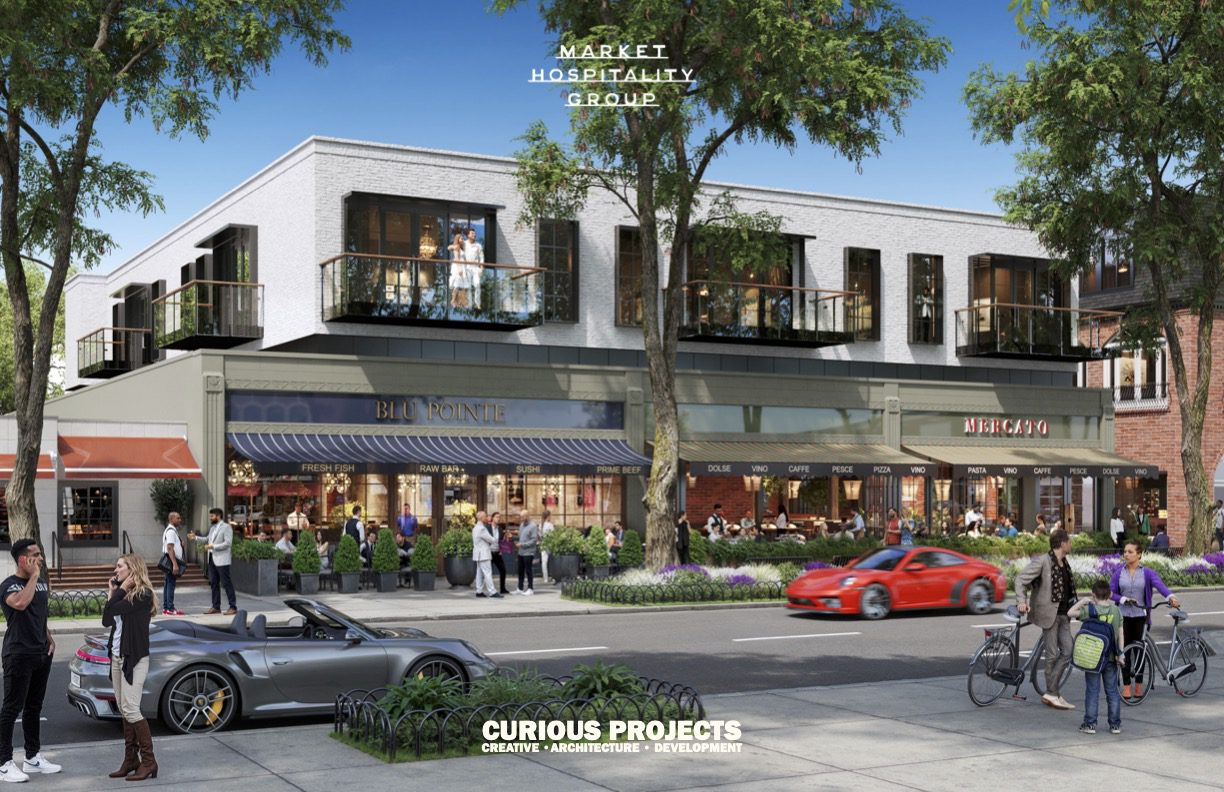
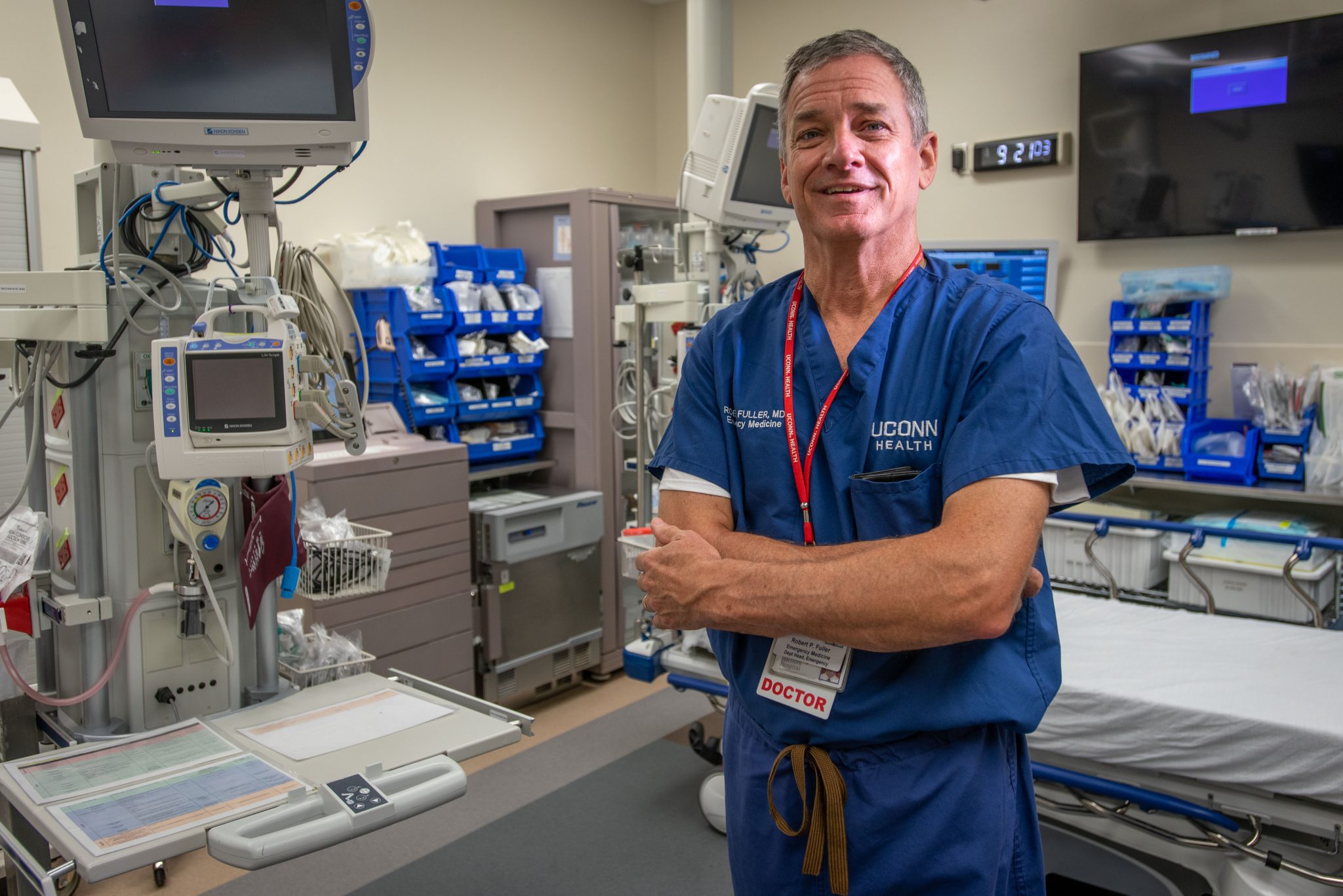
Thank you for this and you are so right about how every family has and will make a difference, large or small.
Question; I seem to remember the area between Albany, Mountain and Flagg, where the condos are today, western end, being part of Cascio’s as a ‘growing’, nursery area. Am I crazy? Maybe I just remember the open land filling in over time.
I love these articles!